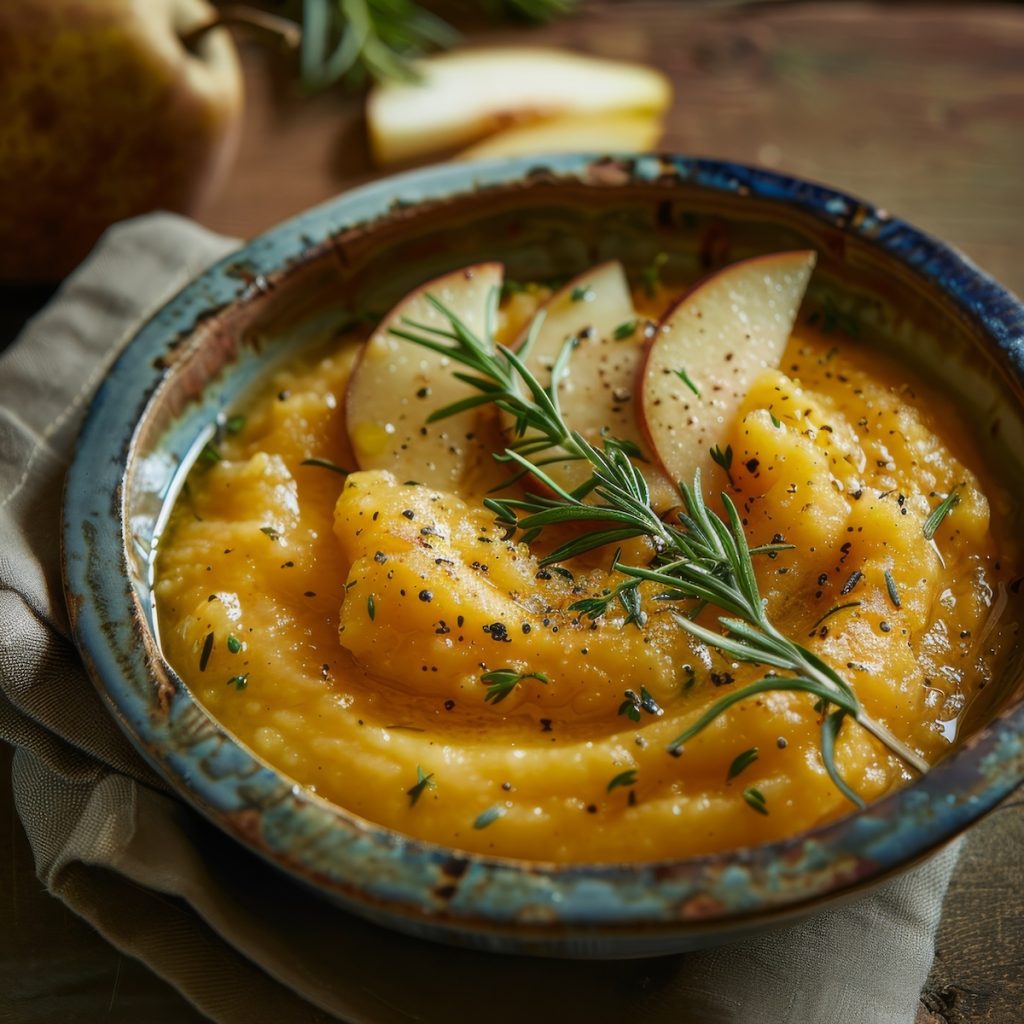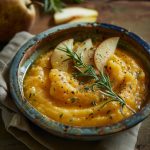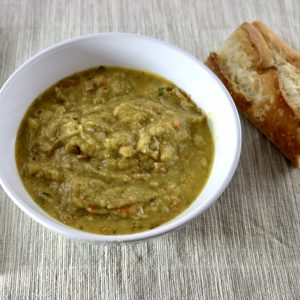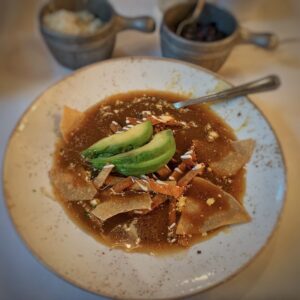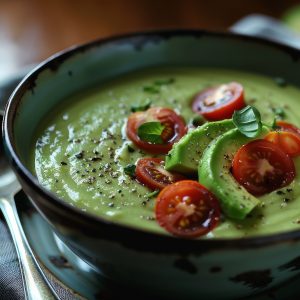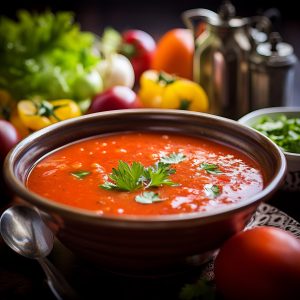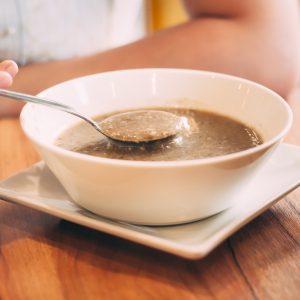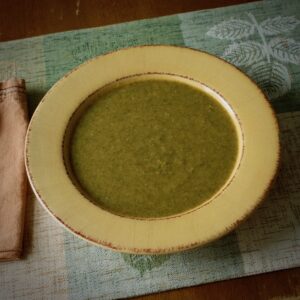Just Because You Call It A Puree Doesn’t Mean It Isn’t A Soup
Delight your taste buds with a velvety puree of butternut squash, pear, and rosemary—a harmonious blend of flavors perfect for any season. This vibrant dish starts with roasted butternut squash, its natural sweetness deepened and enhanced by caramelization. The squash is combined with ripe, juicy pears, adding a hint of fruity sweetness that perfectly complements the savory undertones. Fresh rosemary is the star herb in this recipe, imparting a fragrant, woodsy aroma that elevates the entire dish.
To create this puree, begin by peeling and cubing the butternut squash, then roasting it until tender and slightly golden. Meanwhile, peel and core the pears, adding them to the roasting tray halfway through cooking to soften. Once both the squash and pears are perfectly roasted, transfer them to a blender or food processor. Add a vegetable broth or water splash to achieve your desired consistency and blend until smooth.
Season the puree with freshly chopped rosemary, salt, and pepper, adjusting to taste. The result is a luxurious, silky-smooth puree that is both comforting and sophisticated. Serve it as a side dish, a base for proteins, or even as a stand-alone starter. This butternut squash, pear, and rosemary puree is a delightful addition to any meal, offering a flavor and a touch of elegance.
What’s the Difference Between a Soup and a Puree?
A puree is a type of food preparation where ingredients are cooked and then blended or processed until they achieve a smooth, creamy consistency. This can be done with fruits, vegetables, legumes, and meats.
The goal is to break down the food into a homogeneous, thick mixture without noticeable chunks or pieces. Purees are often used as bases for other dishes, baby food, or standalone meal components.
The primary difference between a puree and a soup lies in their consistency and usage:
Consistency
Puree: Generally thicker and more concentrated. It has a smooth texture without any visible pieces of the original ingredients. Purees often require less liquid than soups and are denser.
Soup: Typically has a thinner, more liquid consistency. Soups can range from broth-based with visible chunks of ingredients to creamy and blended, but they usually have a higher liquid content compared to purees.
Usage
Puree: Purees are often used as a dish or a side component. For example, vegetable purees can thicken sauces, serve as a protein base, or be part of a more complex dish. They can also be served independently but are commonly considered part of a broader meal.
Soup: Soup is usually served as a complete dish, either as a starter or main course. Due to their balanced ingredients and flavors, soups can be enjoyed independently.
While both purees and soups can be smooth and creamy, their fundamental differences lie in thickness, liquid content, and how they are typically served and consumed.
Puree of Butternut Squash with Pear and Rosemary
Ingredients
- 2 teaspoons olive oil
- 1 Spanish onion
- 1 butternut squash
- 1 pear peeled, cored and sliced
- 1 sprig fresh rosemary or 1 tsp. dried
- 7 cups chicken stock
- ½ cup orange juice
- 2 teaspoons fresh orange zest grated
- salt & freshly ground pepper
- fresh orange slices for garnish
Instructions
- Easy prep for this recipe. Chop the onion. Peel, seed and slice the squash. Peel, core and slice the pear. Grate the orange zest.
- Heat oil in a large soup or stock pot over medium-low heat. Add the onion and sauté until the onion is golden, about 5-10 minutes.
- Add the remaining ingredients, raise the heat to high and bring to a boil. Once it comes to a boil, reduce heat to low an simmer, partially covered, for 25 minutes or until the squash is tender.
- Puree the soup with your hand blender ( one of my favorite tools) a blender, or a food processor.
- Garnish each serving with orange slices.

